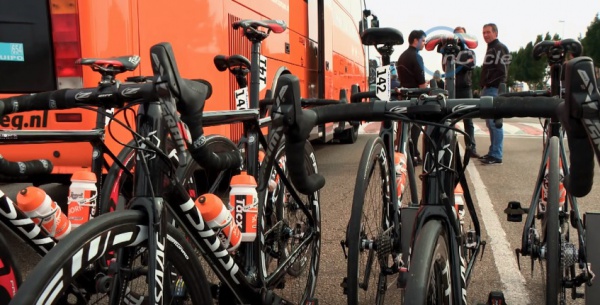Professional road cycling is always on a tight rope of preserving tradition while pushing technology and innovation for improved performance. The general premise of the bicycle remains the same even at the upper echelon of the sport; a two triangle design with tubing, two wheels of equal size, chain and gears not all that different than nearly 100 years ago, and handlebars with brakes. Each one of those parts however has been optimized within the limits of the sports governing body (the UCI) to perform to its highest degree while being the lightest weight possible. Disc brake road bikes are now beginning to make their appearance in the pro road peloton.
Disc brakes have been around for a while largely on mountain bikes and have only recently begun to make their presence on road bikes. The reason for this was that they could not be raced at any level because they weren’t approved by the sports governing body. The basic reason for this was safety. In crashes involving many riders at high speeds, hot, thin rotors can slice through skin like butter. In addition, added weight, the need for a specific frame and wheels, and stopping power different from that of a normal rim brake kept teams from even wanting to pursue having disc brakes.
The bike industry is pushed by companies sponsoring pro teams to ride their latest equipment to show consumers the product and that if it’s good enough to be ridden by the sports top pros, it’s good enough for them to buy. Without pro road teams riding disc brakes on their bikes, disc brake road bikes would never be sought after enough by the general public for companies to make large investments into producing new frames, wheels, and components. It’s only a matter of time now before all of the sports top teams are riding disc brake road bikes and the average road bike you see out on the road has disc brakes. This video from InCycle of the Roompot-Oranje Pro Cycling Team from The Netherlands talks of the change and why they made it. Look for them in the Spring Classics this Spring where the wet, cold conditions on the cobbled roads of Northern Europe will surely give them the advantage in braking.
